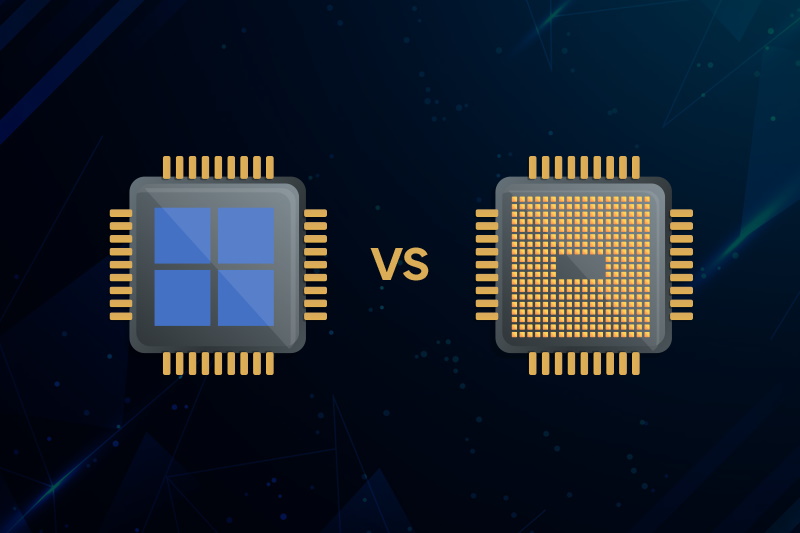The Balance Between Training and Inferencing: Embracing a Hybrid GPU and CPU Approach

Understanding Training and Inferencing
Training and inferencing are two central ideas in the field of machine learning and artificial intelligence, and they have different purposes and prerequisites. Models can be trained to improve their predictive and decision-making abilities by analysing data and adjusting their parameters in response to that analysis. To process large datasets and carry out complex calculations, a lot of computing power is required during this stage. As a result of their superiority in handling parallel processing, Graphics Processing Units (GPUs) are frequently favoured for use at this stage.
In contrast, inferencing involves utilising a previously trained model on unlabeled data in order to draw conclusions or make selections. This method uses previously learned parameters to analyse new data with much less computational overhead. Therefore, Central Processing Units (CPUs), which are typically less powerful than GPUs but more cost-effective and energy-efficient, can often efficiently handle inferencing.
Why a GPU is Not Necessary for Inferencing
- Lower Computational Requirements: Inferencing, in contrast to training, does not necessitate the management of massive datasets or the simultaneous execution of complex calculations. Most inferencing tasks can be handled by a CPU with adequate performance.
- Energy Efficiency: CPUs save more power than GPUs do. This is especially important for always-on systems like those found in data centres or embedded devices, where energy consumption has a direct bearing on operational costs and environmental impact.
- Cost-Effectiveness: CPUs are generally less expensive than GPUs. This disparity in price becomes noticeable in large-scale deployments, where the number of necessary CPUs can be very high.
- Heat Dissipation and Maintenance: CPUs generate less heat than GPUs and can therefore be cooled with less complex methods. This makes data centre maintenance easier and cheaper.
The Benefits of a Hybrid Approach
An optimal solution that meets the requirements of both training and inferencing can be achieved through the use of a hybrid architecture, in which some systems are powered by GPUs and others by CPUs.
- Optimized Resource Allocation: By separating the training and inferencing phases, computing tasks with different requirements can be assigned to the most appropriate hardware. This method guarantees that the most suitable and effective hardware is used for each task.
- Scalability and Flexibility: With a hybrid setup, businesses can adjust their resources as necessary. As a result, they can save money and maintain flexibility by using GPUs for training and a fleet of CPU-based systems for inferencing.
- Reduced Total Cost of Ownership (TCO): It is essential for long-term operations and budget management to have a low TCO, and the energy efficiency and lower cost of CPUs for inferencing contribute to this.
- Environmental Considerations: With growing concerns about energy consumption and its environmental impact, using CPUs for inferencing contributes to a greener and more sustainable approach in AI operations.
Conclusion
Even though graphics processing units (GPUs) are required for the training phase of artificial intelligence (AI) and machine learning (ML) models due to their high computational power, central processing units (CPUs) have emerged as a viable and efficient alternative for inferencing. To meet the varied requirements of AI and ML workflows, a hybrid approach that makes use of both GPUs and CPUs is a powerful, efficient, and cost-effective option. This well-rounded approach is attractive to both businesses and academics because it improves performance and is consistent with economic and environmental concerns.
